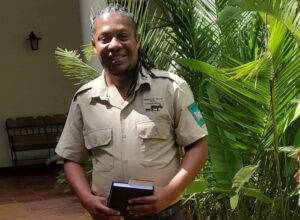By Chipo Gudhe
Zibagwe Rural District Council (ZRDC) lead planner, Johnson Mikuku, has called for the preservation of wildlife corridors in the local authority’s master plan. Mikuku made the remarks during the second phase of the presentation of the proposed master plan last Thursday in Kwekwe.

He said development should cater to well-laid-out routes for wildlife to reduce human and wildlife conflicts.
“We should preserve animal corridors. Provision should be made to encourage coexistence of wildlife conservation and commercial farming within the Midlands Black Rhino Conservancy (MBRC) boundaries and defining animal corridors,” he said.
Mikuku’s call was hugely hailed by animal rights enthusiasts, who said human settlements had posed risks to animals.
“As the MBRC, we recognize the significant strides made in the Second Republic in the tourism sector, bouncing back and achieving the government’s set goals for a US$5 billion tourism economy by the year 2025. This is in line with the National Tourism Recovery and Growth Strategy Plan that was launched by His Excellency, the President, in August 2020 in Victoria Falls. This also dovetails with the National Development Strategy 1 (2020-2025) aim of making Zimbabwe an attractive destination for investment and sustainable wildlife management. We recognize the positive international image that Zimbabwe has created by accepting key global conventions, including the Convention on Biological Diversity, which entails certain national commitments. If well adopted, the recommendations in the Zibagwe Rural District Council master plan will provide a successful coexistence model between humans and wildlife whilst ethically ensuring food security for the nation without compromising our national wildlife heritage,” MBRC7 Conservator Brilliant Chibura said.

Chibura said haphazard settlements had exposed wildlife to many risks.
“There are areas where crop fields have been established on elephant and rhino corridors. The black rhino no longer has access to the whole 63,000 hectares of the MBRC, resulting in a clumped population dispersal model which exposes them to poaching. A rhino calf was lost to snaring in May 2024. Two elephants were wounded in May in a problem animal control attempt. They had eaten crops at an unfenced new crop field that was established on their corridor of many decades. Elephants have a long-term memory of their routes, and it’s sad to think how many more elephants will be taken in this manner,” he said.
Kwekwe has had its share of human-wildlife conflicts after a herd of elephants invaded suburbs and farming areas. In 2021, a 35-year-old man was trampled to death at Pardon Farm in Kwekwe by an elephant for reportedly taking pictures close to a herd of elephants.
In March 2023, a herd of stray elephants wreaked havoc in Mopane, Lozzane, and Sultana areas, destroying crops—a behavior which experts attributed to the destruction of natural routes or animal corridors.
Zimbabwe has the second-largest elephant population in Africa and is battling soaring cases of human-wildlife conflict.



3 thoughts on “Preserve animal pathways: Zibagwe Planner”
Well said , thanks to Mr Brilliant Chibura for updating on the human and wildlife conflictS in the MBRC.
There is need for strong knowledge sharing with local communities on the benefits of human-wildlife coexistence, hence well defined wildlife conservation programmes should be developed and implemented.
Preservation of animal natural habitats is very crucial and must be continually emphasized on ,especially for our endangered species.